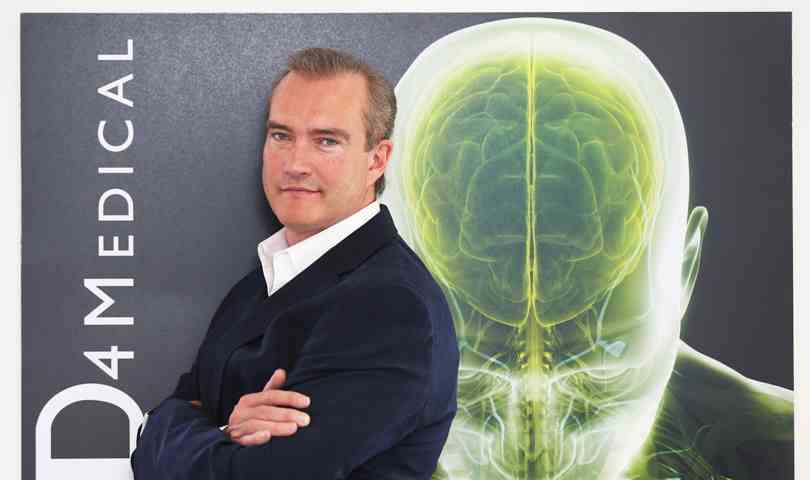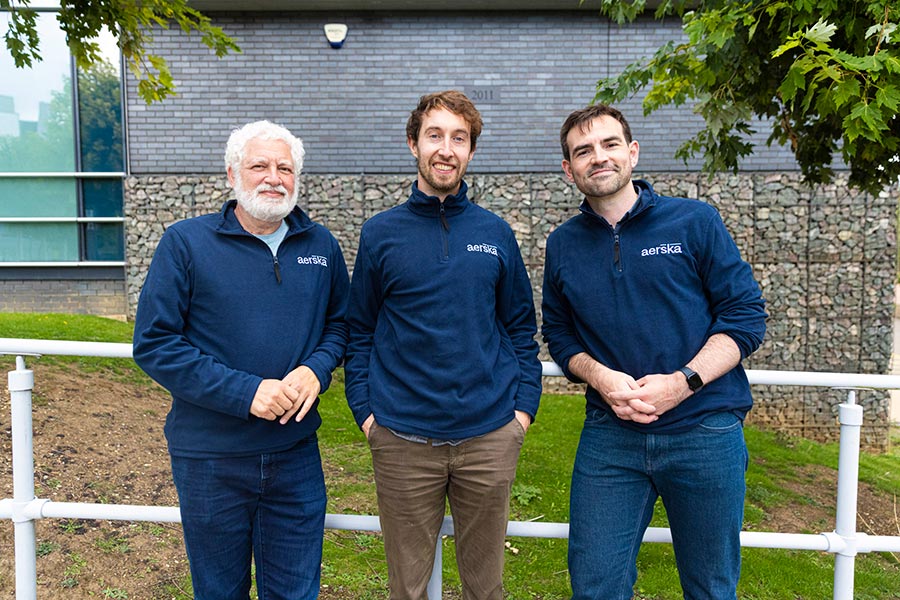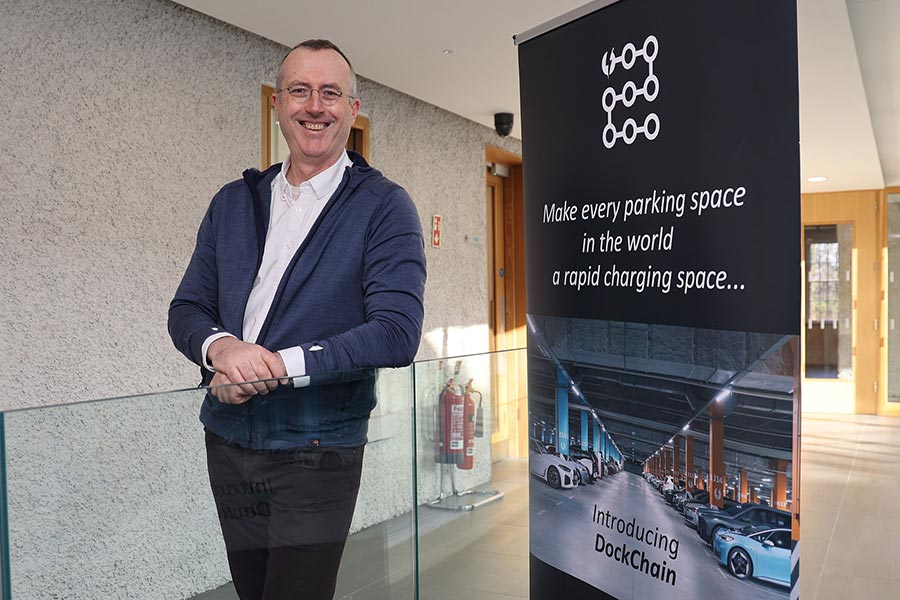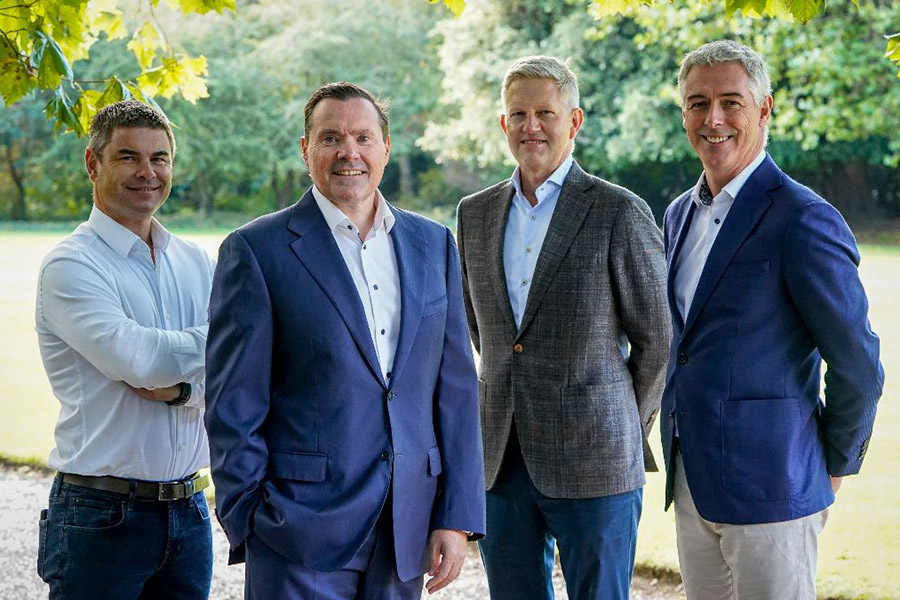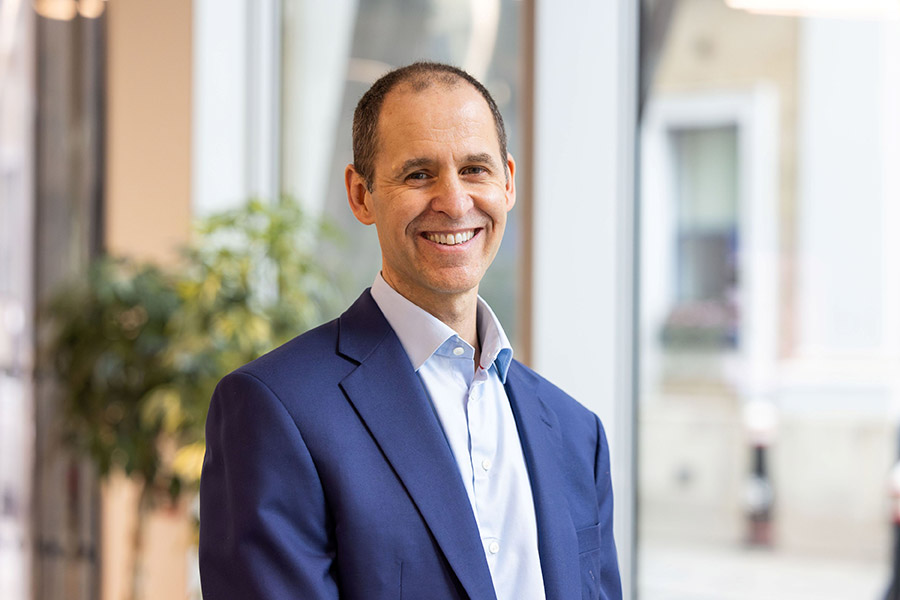Some businessmen have skeletons in the cupboard. John Moore [pictured], chief executive of 3D4Medical, actually has one in his office. Thankfully it’s dismantled and respectfully stored in a large cardboard box, writes Gerry Byrne.
You could say skeletons are part of his stock in trade because they feature strongly in Essential Anatomy, one of the best-selling Apple Store apps of all time. Moore’s Ballsbridge based company, 3D4Medical (which is text-speak for ‘three dimensional for’ Medical) developed the app plus a related suite of other healthcare related apps.
The remarkable thing about Moore’s company is its low Irish profile. Indeed, until Irish healthcare venture capitalist Malin paid $16m for a 38% stake in August 2015, few had heard of the company, let alone knew what it did.
Medical Apps
Yet it’s probably not much of an exaggeration to describe Moore as the Steven Spielberg of apps, thanks to his company’s clever development of computer generated imagery to breathe digital life into human anatomy on iPhone, iPad and (more recently) Android devices. His graphics engine is so impressive that Apple has regularly used clips from his products to promote the sales of iPhones and iPads.
Sold to millions of medical, nursing and other healthcare students and professionals, 3D4Medical apps have dented sales of conventional anatomy textbooks worldwide and now stand poised to invade doctors’ and consultants’ surgeries with even more innovative products.
Yet Moore’s original inspiration came not from blockbuster movie directors but from Kerry entrepreneur Jerry Kennelly, whose Stockbyte library of digitised photographs was sold to Getty Images for $135m in 2007.
Moore's start
Moore’s first outing into healthcare was with an e-learning company he developed to train sales reps for pharmaceutical companies. Part of his toolbox included flashy computer generated 3-d images he commissioned to illustrate body parts treated by the medications his clients sold.
He says that anytime he presented them, people would say ‘Wow’. That gave him the notion, in 2004, of producing three-dimensional medical images for a Stockbyte-style library of medical images he could licence for royalties.
A traditional photo of a heart is not very clear — there’s blood and other tissues all over the place — but Moore’s people were able to make them photo-realistic without messy bodily fluids. 3D4Medical produced about 18,000 anatomy images over three years to be licensed for editorial and advertising illustrations. A major bragging point is the fact that some of its images have appeared on the front of Time magazine, National Geographic and Scientific American.
“It was a lovely business model. Once we made the images we sat back and the royalty cheques rolled in,” says Moore. “However the problem was that once you strayed outside the realm of common pictures like the heart and brain from all sorts of different angles, you end up doing stuff like ingrown toenails, and nobody was really licensing them. So we weren’t getting a return on what it cost us to make them. In addition, the recession from 2008 onwards meant that hardly anybody was licensing the images we were producing.”
New Direction
As revenues nosedived, it was time to take stock. The iPhone had just been launched, Apple had unveiled its online App Store and Moore decided to use the images to take a punt on developing an anatomy app that students could use as a study aid.
“We were one of the first in the market and it was a big hit for us. So then we did a suite of them and they did really well. Then the iPad came out and that completely revolutionised everything for us. It’s big, it’s graphical and it really pushed out the boundaries of what can be done.”
When Apple saw how well Moore’s apps demonstrated the best in its products, the company contacted him and signed up for several product launch presentations, including one hosted by Apple’s CEO, Tim Cook. “We started to develop a really good symbiotic relationship with Apple. We were helping to sell iPads, they were promoting us and it worked both ways. Since then, for the past five years we’ve been glued to number one in all the categories in which we sell.”
Using The Apps
To date 3D4Medical has produced 105 apps and more are being developed. They have moved from basic anatomical renditions for students to apps which a surgeon can use to explain to patients how he proposes to operate on them, even to the extent of emailing ‘stills’ appropriate to the patient’s condition.
For instance, an orthopaedic app shows how arthritis develops and how joint replacements work, and how a slipped disc is removed, among dozens of other procedures. A health and fitness app, using anatomical animations, has sold 1.4 million copies. Apps using the firm’s latest 3D engine have even smoother graphics and enable the user to peel away overlying tissues, like a virtual dissection.
Indeed 3D4Medical’s newer apps, to be launched later this year, will represent a technological quantum shift. They move 3D4Medical on from a largely student market to one where the key customer is a senior medical practitioner, or consultant. Users will be able to demonstrate surgical procedures to their patients and even supply them with a recording of the demo’s graphics, complete with a voice-over and sketches drawn by the surgeon over a background of the app’s graphics.
Apart from making life easier for the practitioner, this new technology can be used for recording the consultation, thus fulfilling the requirements of new US legislation which requires practitioners to demonstrate they properly obtained informed consent and keep a record for up to ten years later.
Patient Consultation
This is where the soon-to-be launched Complete Anatomy Consultation Apps slot in. For the first time, this suite of new products will be for desktop computers and servers linked to the cloud. It can also attract a much beefier selling price than a traditional mobile app.
“US research shows that patients only recall 14% of what a consultant tells them. As a result, when confirming consent, 60% of patients do not understand or fully read consent forms. Consent related litigation costs $1bn annually,” says Moore, explaining why his new products should prove attractive to practitioners.
Moore is also making a further assault on the $8.5bn printed textbook market with upscaled apps for students. For most publishers, going digital is mostly about creating a PDF version of a standard textbook, he says. Previous anatomical apps from 3D4 mostly augmented textbooks but he aims to replace them entirely.
'Only Money'
Funding all that might be regarded as tall talk from a company which has a turnover of €4m and profits of €750,000. But as recent events proved, 3D4Medical should have few problems trebling or even quadrupling sales over the coming year. Indeed next year’s sales target is €14m.
After speaking at last year’s Web Summit, Moore was approached by executives from the London Stock Exchange’s Alternative Investment Market, who suggested he should consider a public listing. Although he was not initially enthusiastic, Moore accepted that he would soon face a pressing need to enlarge the company’s capital base, and he put the wheels in motion for an AIM listing.
The AIM process involved a series of presentations to potential investors. Word seeped out and one Friday, three days before Moore was due to sign the final AIM admission application, he got a phone call from the US from Kelly Martin, a director of Malin Corporation, the new Irish venture capitalist specialising in healthcare. Martin is a former CEO of pharmaceutical giant Elan, from which several of Malin’s founders have emerged.
“Don’t sign up for AIM, come to bed with us,” was the gist of Martin’s appeal. Moore replied that he was committed to AIM, having devoted so much time and energy into applying for a listing but that he would give his investor pitch to them, if they wished. Within hours Martin was on a Dublin-bound flight and the entire Malin board was assembled in Dublin the following day, Saturday, to hear Moore’s presentation.
On Sunday Moore was asked if he could stall his AIM admission and he agreed to a week’s delay. “Malin came back and made us a great offer and told us what they could do with us strategically,” says Moore. “AIM was attractive but it was only money; there were no strategic alliances which could get us into where we wanted to go. I went back to the AIM guys in London and said sorry, perhaps we’ll go with you again. We gladly paid the admission fees because they had really worked very hard for us. I hated letting them down.”
Malin influence
Malin has appointed three directors to the board of 3D4Medical, including John Herlihy, former head of Google Ireland, and Kelly Martin. Moore has also been promised the support of Malin advisors, who include a senior surgeon at Yale University Hospital, a former US Food and Drug Administration commissioner and a senior Cambridge biologist. With some of those guys watching his back, Moore doesn’t see any problems getting a foot in the door of top US hospitals to promote his new product range.
“We have a significant reach into the hospital, the regulatory and the academic communities,” explains Malin’s chairman, John Given, also an Elan veteran. “It will allow 3D4Medical to combine their wealth of expertise with the cutting edge platform and resources we offer to bring their business forward.”
Malin was formed in 2015 to acquire shares in pharmaceutical, medical device and other promising young healthcare companies. Its backers include an Irish government agency. Malin’s IPO raised more than €300m, which it recently topped up with a €42 million private placement. There are no plans to raise any further funds in the short term, says Given.
At first glance, 3D4Medical hardly appears to fit the profile of a target for a healthcare venture capitalist. Instead, one might expect to see it in the portfolio of a publishing or software specialist. However, Given disagrees. “Health information on mobile devices is the new norm,” he says. “We would see 3D4 Medical as quite a natural progression for us to step into medical technology. It was an area in which we had contemplated investing, so when 3D4 presented themselves we thought it looks pretty ideal.”
Curiously, another of Moore’s technology bedfellows in the Malin stable is a robot, used for disinfecting hospitals. Further Spielberg analogies are becoming hard to resist.


